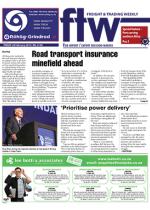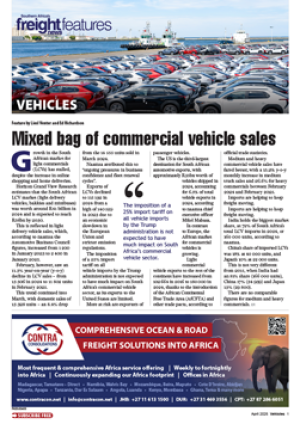Questions have been raised
about the vast sums of money
being invested in developing
the City Deep Freight Hub,
which is suffering from
declining volumes of through
traffic.
This joint investment
between the Johannesburg
Roads Agency (JRA) and
Transnet has been loudly
and proudly heralded in two
major newspapers and on a
radio station.
“Work has already started
on a massive logistics
corridor stretching between
Durban and the central
provinces of the Free State
and Gauteng,” according to
information released to the
media.
This includes the building
of a R2.3bn container
terminal at City Deep
(which serves the Natcor
rail corridor between
Gauteng and Durban) and
a R14.9bn procurement of
rolling stock for the rail
line which will service the
corridor.
And this latest billion
rand investment consists of
a R122-million development
programme for the roads
leading to City Deep, and
R900m being spent by
Transnet on the terminal
itself.
The roads projects that are
currently in the final stage
of design are the widening
of Rosherville Road and the
Rosherville Road Bridge, the
extension of Bonsmara Road
and the development of the
Cleveland Road Bridge.
Also, investigations have
almost been completed into
the extension of Houer Street
as well as the development
of new links or ramps to
the N17. This, said the JRA,
would ensure increased
mobility to and from the
terminal and the freeway,
and the projects should start
later this year.
While the roads
development may stand good
for other businesses in the
area, and others using them
in transit elsewhere, just how
much justification is there
for the Transnet upgrade of
City Deep? If you’re planning
a market-demand capital
project you need to assume
growing business, and the
extra revenue that will come
with it.
The Transnet upgrade, said
newspaper reports, would
result in the modernisation of
the inland container terminal
to handle increased volumes
of operations.
But where is this extra
volume to come from?
Volumes moving on rail are
actually falling.
Dave Watts, maritime
director for the SA
Association of Freight
Forwarders (Saaff), worked
from the Transnet Port
Terminals (TPT) monthly
key performance indicators
(KPI) – while deducting the
numbers of transhipments
that don’t move landside
(‘Interesting transhipment
anomaly on Durban-Jo'burg
route’ FTW November 2014).
“Based on these figures,
in the short term there is
not a road-to-rail move.
It’s actually the other way
round,” he said.
And, indeed, most of
the rail-to-road swing
is customer generated,
according to Watts.
But whatever the reasons,
Transnet’s claims of growing
volumes being shipped by
rail just don’t hold water.
How and where are
they coming up with these
figures?
“I can’t get my mind round
it,” Watts said.
INSERT
In the short term
there is not a roadto-
rail move. It’s
actually the other
way round.
– Dave Watts
CAPTION
The upgrade of City Deep involves a R122-million development programme for the roads
leading to City Deep, and R900m being spent by Transnet on the terminal itself.

